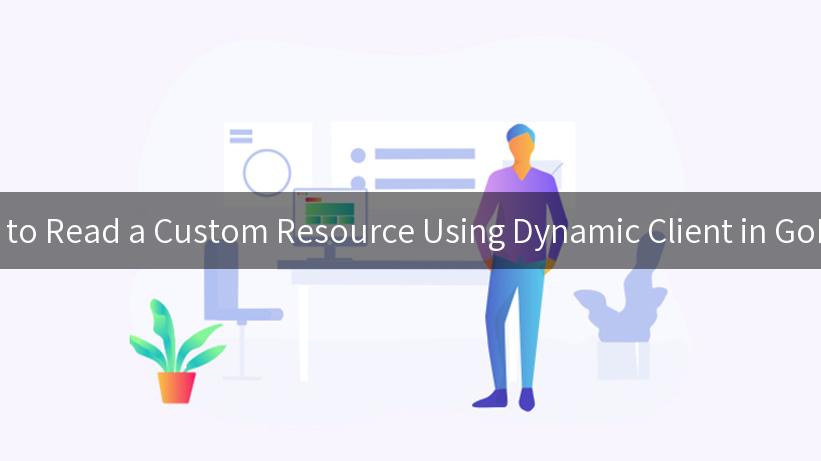
In the world of microservices and cloud-native applications, dynamically managing resources is essential. As Kubernetes continues to flourish, understanding how to interact with custom resources becomes imperative for developers. In this article, we explore how to read a custom resource using the dynamic client in Golang. By leveraging the Kubernetes API, we can effectively manage resources in a seamless manner.
Overview of Dynamic Clients in Kubernetes
Dynamic clients allow developers to interact with the Kubernetes API without pre-compiling the resource types, making them incredibly flexible for handling custom resources. This capability is particularly beneficial when microservices patterns are prevalent, and services dynamically create or manage their resources.
Advantages of Using Dynamic Clients
Dynamic clients offer several advantages:
- Flexibility: No need to define types upfront.
- Extensibility: Easily support new Kubernetes resources as they are added.
- Simplicity: Convenient for quick prototypes and scripts.
Setting Up Your Environment
Before we dive into using the dynamic client, ensure that you have the necessary tools installed:
- Go (Golang): If you haven’t installed Go, download it from the official Go website.
- Kubernetes Client-go: You can install the Kubernetes client-go library using:
bash
go get k8s.io/client-go@v0.23.0
- Kubeconfig: Ensure you have access to a kubeconfig file that points to your Kubernetes cluster.
Step-by-Step: Reading a Custom Resource
Step 1: Import Necessary Packages
Here’s how to import the necessary packages in your Go application:
package main
import (
"context"
"fmt"
"log"
"k8s.io/client-go/kubernetes"
"k8s.io/client-go/tools/clientcmd"
"k8s.io/client-go/dynamic"
"k8s.io/apimachinery/pkg/runtime/schema"
"k8s.io/apimachinery/pkg/apis/meta/v1/unstructured"
)
Step 2: Configuring the Dynamic Client
We will configure the dynamic client to interact with a specific Kubernetes namespace and custom resource. This can be done effectively as shown below:
func main() {
// Load the kubeconfig file
kubeconfig := path_to_your_kubeconfig
config, err := clientcmd.BuildConfigFromFlags("", kubeconfig)
if err != nil {
log.Fatalf("Failed to build config from kubeconfig: %v", err)
}
// Create the dynamic client
dynamicClient, err := dynamic.NewForConfig(config)
if err != nil {
log.Fatalf("Failed to create dynamic client: %v", err)
}
// Define the GroupVersionResource
gvr := schema.GroupVersionResource{
Group: "your.custom.api.group",
Version: "v1",
Resource: "customresources",
}
// Specify the namespace and name of the custom resource you want to read
namespace := "default" // Change as necessary
name := "your-custom-resource-name"
// Read the custom resource
customResource, err := dynamicClient.Resource(gvr).Namespace(namespace).Get(context.TODO(), name, metav1.GetOptions{})
if err != nil {
log.Fatalf("Failed to get custom resource: %v", err)
}
fmt.Printf("Successfully retrieved custom resource: %v\n", customResource)
}
Step 3: Running the Application
After implementing the necessary steps and filling in your custom resource details, you can run your application using:
go run main.go
This simple application demonstrates how to configure and use the dynamic client to read a custom resource from your Kubernetes cluster.
Understanding the Output
Once you successfully execute the application, you should see the output of the custom resource specified in your code. The printed output is typically in the form of a JSON representation of your custom resource, showing all the details like attributes and statuses.
Example of Custom Resource Output
The output can resemble the following example:
{
"kind": "CustomResource",
"apiVersion": "your.custom.api.group/v1",
"metadata": {
"name": "your-custom-resource-name",
"namespace": "default",
"creationTimestamp": "2023-10-01T12:00:00Z"
},
"spec": {
// Custom specifications
},
"status": {
// Current status
}
}
Leveraging APIs and Gateway Solutions
With the rise of services like AI Gateway, AWS API Gateway, and LLM Gateway, developers can further enhance their applications’ capabilities. These gateways offer advanced identity authentication and can streamline how we interface with external APIs and validate the authentication of requests being made.
An example of integrating with an API Gateway might allow you to wrap the calls to the Kubernetes API, enabling features like rate limiting, comprehensive logging, and enhanced security without needing to redesign your application.
Table: Comparison of Gateways
| Feature |
AI Gateway |
AWS API Gateway |
LLM Gateway |
Advanced Identity Authentication |
| Dynamic API Management |
Yes |
Yes |
Yes |
Yes |
| Identity Verification |
Basic |
Advanced |
Moderate |
Excellent |
| Rate Limiting |
Yes |
Yes |
No |
Yes |
| Integration with Kubernetes |
Limited |
Yes |
No |
Yes |
Code Example: Using AI Gateway for Dynamic Interactions
Let’s say you want to integrate with an AI service using your custom resource; you could leverage the functionality of an AI Gateway as follows:
curl --location 'http://ai-gateway-instance/api' \
--header 'Content-Type: application/json' \
--header 'Authorization: Bearer your_token' \
--data '{
"data": {
"customResource": "value"
}
}'
Conclusion
In conclusion, utilizing a dynamic client in Golang to read custom resources in Kubernetes is a straightforward process that provides powerful capabilities. This pattern becomes significantly more robust when integrated with modern API gateways like AI Gateway, AWS API Gateway, or LLM Gateway, offering features such as advanced identity authentication and seamless API management.
By understanding and implementing these concepts, developers can build more sophisticated and efficient applications that are capable of managing their Kubernetes resources dynamically.
APIPark is a high-performance AI gateway that allows you to securely access the most comprehensive LLM APIs globally on the APIPark platform, including OpenAI, Anthropic, Mistral, Llama2, Google Gemini, and more.Try APIPark now! 👇👇👇
With more skills in your toolkit, you’re now ready to tackle complex Kubernetes applications and leverage cloud-native technologies effectively. Happy coding!